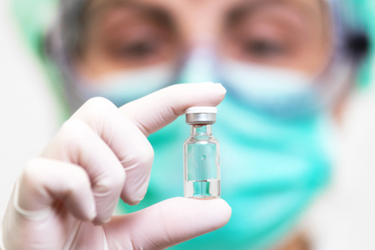Dual Membrane Preconditioning Can Improve Concentration, Cut HCPs
A conversation with Aylin Mohammadzadehmarandi, Ph.D.

Recent research from a team at Penn State, the FDA, and Takeda indicates that single-pass tangential-flow filtration (SPTFF) and high-performance countercurrent membrane purification (HPCMP) can be linked to precondition monoclonal antibody harvests far more efficiently than conventional approaches.
Their study, published in “Biotechnology and Bioengineering,” details how the integrated system achieved a 20-fold concentration of clarified cell culture fluid and cut host cell proteins (HCPs) by roughly 60% while maintaining 94% antibody yield. DNA impurities fell more than 30-fold, and the entire process ran continuously for more than a day without fouling.
All told, buffer use dropped to about 76 L per kilogram of mAb — orders of magnitude below typical downstream consumption.
For developers under pressure to shrink footprint, utilities, and resin costs, the implications are immediate. By replacing protein A preconditioning steps with membrane operations, the team describes a path toward fully membrane-based continuous antibody purification — one that could sidestep expensive affinity capture while enabling cheaper, faster campaigns and easier scale-out in perfusion systems.
The work also hints at a broader shift: treating clarified harvest not as a discrete batch input but as a continuously conditioned feed, tuned for precipitation, crystallization, or flow-through chromatography downstream. If validated at pilot scale, the SPTFF–HPCMP combo could become a front-end intensification tool for next-generation mAb facilities — and a bridge between today’s hybrid batch setups and true end-to-end continuous manufacturing.
We spoke with co-author Aylin Mohammadzadehmarandi, Ph.D., about what it would take to translate this lab demonstration into industrial practice, how the economics stack up against protein A, and where membrane-only downstream processes may finally find their foothold.
What problem did the work address, and why combine SPTFF and HPCMP?
The main problem addressed was the need for downstream process intensification in monoclonal antibody (mAb) manufacturing, minimizing cost and avoiding expensive, high-footprint protein A platforms. SPTFF alone enables high concentration of the clarified cell culture fluid (CCF) but provides little HCP or DNA removal. HPCMP, previously shown to remove HCP and DNA via diffusion-based countercurrent operation, suffers from high buffer demand at low mAb concentrations and fouling if DNA is not depleted first. By integrating SPTFF (20x concentration) with HPCMP, the workflow achieves high mAb concentrations (up to 56 g/L), reduces HCP and DNA concurrent to buffer exchange, and enables continuous intensified operation with significantly reduced buffer consumption and facility footprint compared to platform approaches. This approach overcomes earlier limitations by providing high yield (∼94%), ∼60% HCP reduction, and over 30-fold DNA removal in a single continuous module set, with minimal fouling over 24 to 36 hours of operation.
How does this process fit a continuous mAb platform — can it replace capture?
We are very optimistic that the integrated SPTFF-HPCMP platform can replace traditional capture steps in continuous mAb production. By integrating this with continuous DNA precipitation — also achievable using low-cost hollow fiber modules — DNA levels will be significantly reduced in the clarified cell culture fluid. Reduced DNA decreases membrane fouling in HPCMP and enables more effective HCP removal, potentially achieving over 98% HCP clearance as shown in earlier work with HPCMP by my Penn State colleagues and me.
This combined approach may require only minimal polishing steps afterward. Altogether, this architecture supports a fully continuous intensified mAb platform that replaces protein A capture with a low-cost membrane-based process consisting of DNA precipitation, SPTFF concentration, HPCMP purification, and polishing, enabling high yield, purity, and process efficiency.
Can this design be adapted for low-titer or high-viscosity feeds?
That’s an amazing question, and the answer is yes! Unlike pressure-driven filtration, where operating at high feed concentration often decreases yield and HCP removal due to increased fouling, the HPCMP platform is compatible with very high concentration feeds. This makes it an exceptional choice for more viscous and concentrated drug substances.
In this study, we demonstrated stable operation and high mAb yield (∼94%) when feeding a very high concentration feed of approximately 56 g/L mAb solution. The diffusive transport and countercurrent operation inherent to HPCMP minimize fouling effects typically observed in pressure-driven systems at high concentration. This performance has been consistently proved both in this study and earlier works, showcasing HPCMP’s robustness and suitability for viscous, concentrated feed streams in mAb purification.
Overall, the integrated SPTFF-HPCMP process offers flexibility to handle a variety of feed titers and viscosities, maintaining impurity clearance, product yield, and continuous operation well beyond what traditional filtration methods tolerate.
How does membrane module cost per gram mAb scale in manufacturing, and what’s the effect of cleaning/reuse? What limits scale-up?
At production scale (e.g., 500 L bioreactor, titer 2.8 g/L), the membrane module cost per gram mAb is extremely low. Notably, the hollow fiber modules used for HPCMP are very low cost and designed as single-use devices, eliminating the need for cleaning or reuse cycles. This single-use nature reduces operational complexity and contamination risk.
The study found that HPCMP requires approximately 14 m² of membrane area and SPTFF about 10 m² per day — footprints that are moderate compared to chromatography columns. The main scale-up limitation might arise from the low feed flux and the total membrane area required. Thus, scaling might be constrained by physical footprint and module area rather than membrane cost or cleaning life cycle.
Overall, the cost picture remains very favorable up to industrial throughput levels, especially benefiting from the low cost and single-use design of the hollow fiber modules, facilitating rapid deployment and flexible manufacturing scales.
Which in-process control metrics matter, and how can PAT tools be leveraged?
For HPCMP, transmembrane pressure (TMP) is not a critical process variable, given the diffusion-driven separation mechanism run at near-zero net ultrafiltration. Instead, key control metrics include:
- draw-to-feed flow ratio, which governs buffer exchange and impurity clearance efficiency,
- feed flow rate, a major metric to enhance impurity removal: by adjusting feed flow rate, impurity removal can be tuned from very low levels up to over 90%–95%. This effect arises because feed flow rate controls residence time in the module — a lower feed flow rate increases residence time, giving impurities more opportunity to diffuse through membrane pores and be removed effectively,
- product yield and impurity concentrations (HCP, DNA), monitored by in-line or at-line analytical methods, and
- membrane pore size distribution and module performance indicators (to detect fouling or loss of selectivity).
PAT tools can be integrated to continuously monitor these key parameters using flow meters, UV/fluorescence sensors, ELISA, DNA assays, SDS-PAGE, SEC, and protein A analysis. Such real-time data facilitates automated control of draw/feed ratios and feed flow rate adjustments, as well as timely switching of modules in response to changes in performance, ensuring consistent product quality and process efficiency in continuous biomanufacturing.
This approach aligns with the evolving bioprocessing 4.0 paradigm, enabling real-time process insights and agile, flexible control of monoclonal antibody manufacturing streams.
About The Expert:
 Aylin Mohammadzadehmarandi, Ph.D., is a postdoctoral associate at MIT’s Koch Institute for Integrative Cancer Research. She received her Ph.D. in chemical engineering from Penn State University, specializing in high-performance countercurrent membrane purification (HPCMP) as a novel approach for continuous platform for therapeutic purification. Her industrial experience includes three years of research and development in downstream and formulation development at CinnaGen Biopharma (Iran), where she developed advanced protein characterization and purification methods for monoclonal antibodies.
Aylin Mohammadzadehmarandi, Ph.D., is a postdoctoral associate at MIT’s Koch Institute for Integrative Cancer Research. She received her Ph.D. in chemical engineering from Penn State University, specializing in high-performance countercurrent membrane purification (HPCMP) as a novel approach for continuous platform for therapeutic purification. Her industrial experience includes three years of research and development in downstream and formulation development at CinnaGen Biopharma (Iran), where she developed advanced protein characterization and purification methods for monoclonal antibodies.
